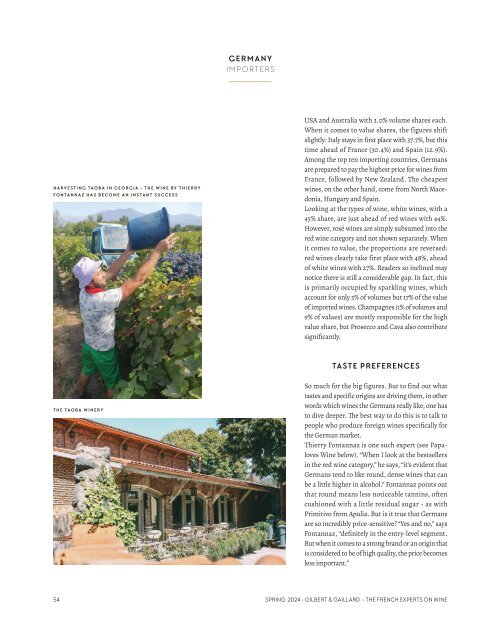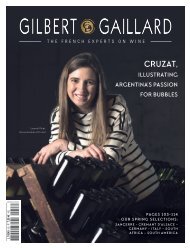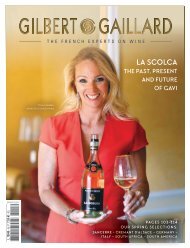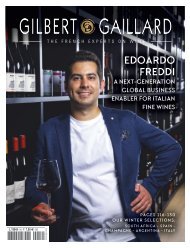You also want an ePaper? Increase the reach of your titles
YUMPU automatically turns print PDFs into web optimized ePapers that Google loves.
GERMANY<br />
IMPORTERS<br />
HARVESTING TAOBA IN GEORGIA - THE WINE BY THIERRY<br />
FONTANNAZ HAS BECOME AN INSTANT SUCCESS<br />
USA and Australia with 3.0% volume shares each.<br />
When it comes to value shares, the figures shift<br />
slightly: Italy stays in first place with 37.7%, but this<br />
time ahead of France (30.4%) and Spain (12.9%).<br />
Among the top ten importing countries, Germans<br />
are prepared to pay the highest price for wines from<br />
France, followed by New Zealand. The cheapest<br />
wines, on the other hand, come from North Macedonia,<br />
Hungary and Spain.<br />
Looking at the types of wine, white wines, with a<br />
45% share, are just ahead of red wines with 44%.<br />
However, rosé wines are simply subsumed into the<br />
red wine category and not shown separately. When<br />
it comes to value, the proportions are reversed:<br />
red wines clearly take first place with 48%, ahead<br />
of white wines with 27%. Readers so inclined may<br />
notice there is still a considerable gap. In fact, this<br />
is primarily occupied by sparkling wines, which<br />
account for only 5% of volumes but 17% of the value<br />
of imported wines. Champagnes (1% of volumes and<br />
9% of values) are mostly responsible for the high<br />
value share, but Prosecco and Cava also contribute<br />
significantly.<br />
TASTE PREFERENCES<br />
THE TAOBA WINERY<br />
So much for the big figures. But to find out what<br />
tastes and specific origins are driving them, in other<br />
words which wines the Germans really like, one has<br />
to dive deeper. The best way to do this is to talk to<br />
people who produce foreign wines specifically for<br />
the German market.<br />
Thierry Fontannaz is one such expert (see Papaloves<br />
Wine below). “When I look at the bestsellers<br />
in the red wine category,” he says, “it’s evident that<br />
Germans tend to like round, dense wines that can<br />
be a little higher in alcohol.” Fontannaz points out<br />
that round means less noticeable tannins, often<br />
cushioned with a little residual sugar - as with<br />
Primitivo from Apulia. But is it true that Germans<br />
are so incredibly price-sensitive? “Yes and no,” says<br />
Fontannaz, “definitely in the entry-level segment.<br />
But when it comes to a strong brand or an origin that<br />
is considered to be of high quality, the price becomes<br />
less important.”<br />
54 SPRING 2024 • GILBERT & GAILLARD - THE FRENCH EXPERTS ON WINE
















